A properly constructed heating installation is safe to use and does not pose a threat to household members or the durability of the structure of the residential building. The condition for proper operation of the installation is the proper installation and efficient operation of safety valves. What is the function of such valves? How to recognize a safety valve failure and repair the installation? How to check the correct operation of the safety valve? You will find answers to these questions in the article below.
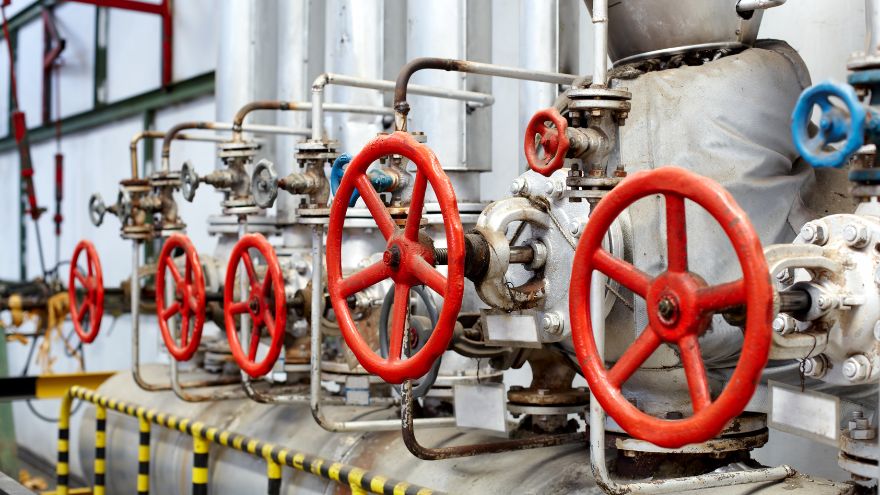
Check safety valves at the Onninen wholesaler
How does the safety valve work?
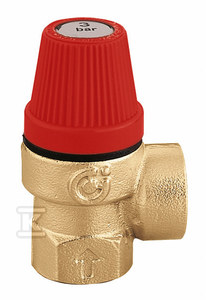 Safety valves protect heating installations against dangerous, uncontrolled pressure increases. This happens due to an excessive increase in the temperature of the heating medium in the circuit. The safety valve prevents excessive pressure in the central heating system. The valves are installed in places where the pressure in the installation may increase above the safe level, in practice usually in front of the boiler or the hot water installation circuit. When the pressure exceeds the set value, the valve automatically opens and releases excess liquid, which reduces the pressure in the installation. The lack of a safety valve or its damage may result in a sudden increase in pressure, even causing the boiler to explode, damaging the installation and causing burns to household members. Safety valves therefore play a key role in ensuring the stability and long life of the installation.
Safety valves protect heating installations against dangerous, uncontrolled pressure increases. This happens due to an excessive increase in the temperature of the heating medium in the circuit. The safety valve prevents excessive pressure in the central heating system. The valves are installed in places where the pressure in the installation may increase above the safe level, in practice usually in front of the boiler or the hot water installation circuit. When the pressure exceeds the set value, the valve automatically opens and releases excess liquid, which reduces the pressure in the installation. The lack of a safety valve or its damage may result in a sudden increase in pressure, even causing the boiler to explode, damaging the installation and causing burns to household members. Safety valves therefore play a key role in ensuring the stability and long life of the installation.
Central heating safety valves
CO safety valves are built 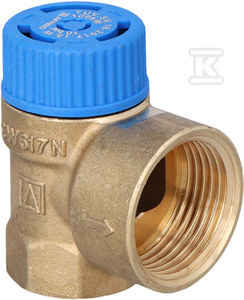 made of a body with a spring, a spindle and a plug. The inner chamber of the body is secured by a membrane, protecting the body from the flowing medium. The valves perform their function until the heating medium reaches a temperature of 140 degrees Celsius. The initial spring tension (factory setting) corresponds to an opening pressure from 1.5 bar to 6 bar. How does the safety valve work? The valve in the deenergized state is closed. The factor contained in the installation flows under the plug. An increase in pressure above the set value causes the valve to open and the medium to flow until the pressure in the installation decreases. When the pressure stabilizes below the set value, the valve plug closes and the medium flow stops.
made of a body with a spring, a spindle and a plug. The inner chamber of the body is secured by a membrane, protecting the body from the flowing medium. The valves perform their function until the heating medium reaches a temperature of 140 degrees Celsius. The initial spring tension (factory setting) corresponds to an opening pressure from 1.5 bar to 6 bar. How does the safety valve work? The valve in the deenergized state is closed. The factor contained in the installation flows under the plug. An increase in pressure above the set value causes the valve to open and the medium to flow until the pressure in the installation decreases. When the pressure stabilizes below the set value, the valve plug closes and the medium flow stops.
The detailed operation and type of the safety valve depends on the type of central heating installation. In open installations, a safety valve and an open expansion vessel are used, through which excess water flows out. They are mounted high, above the other elements of the installation, often in the attic or attic. This method is used in installations operating with solid fuel boilers.
In the case of closed installations working with condensing furnaces, heat pumps and gas boilers, the safety valve is connected to the pressure vessel and excess water is discharged into the sewage system.
DHW safety valves
DHW safety valves are installed next to hot water tanks and are very important from the point of view of building safety. Their task is to prevent a sudden increase in pressure inside the tank, which may lead to its damage or explosion. A safety valve for hot water tanks should be installed at the water inlet to the tank or at the hot water outlet. This valve is designed to open automatically when the water pressure increases above a certain value, usually 6 bar.
Why is the safety valve leaking?
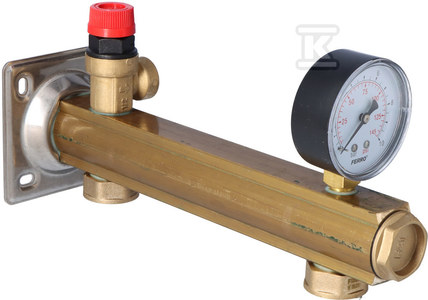 It sometimes happens that water drips from the safety valve. In the case of a valve in the DHW circuit, this does not necessarily mean a failure. Dripping may occur during use of the heater and is related to the volume expansion of water as a result of its heating - it indicates the correct operation of the valve. Then, it is usually enough to turn off the cold water supply, turn on the tap and drain excess hot water from the installation, and then turn on the cold water supply.
It sometimes happens that water drips from the safety valve. In the case of a valve in the DHW circuit, this does not necessarily mean a failure. Dripping may occur during use of the heater and is related to the volume expansion of water as a result of its heating - it indicates the correct operation of the valve. Then, it is usually enough to turn off the cold water supply, turn on the tap and drain excess hot water from the installation, and then turn on the cold water supply.
Failure of the central heating valve usually means that the expansion vessel is missing, installed in the wrong place or that its parameters of pressure and water temperature have not been adjusted after installation in the installation. Sometimes the cause is too high pressure in the water supply network.
How to check the safety valve?
Periodically we should 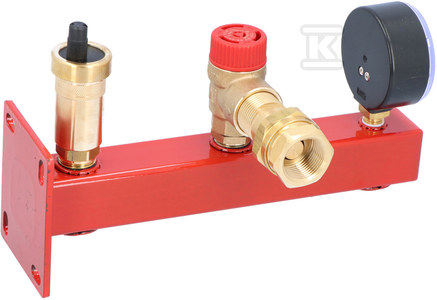 check the proper operation and tightness of safety valves. This is done by lifting or turning the valve knob. Dripping water indicates its damage. You should then call a plumber and have the installation inspected. A specialist will check whether the valve needs to be replaced or whether it is enough to clean it of deposits or regenerate it.
check the proper operation and tightness of safety valves. This is done by lifting or turning the valve knob. Dripping water indicates its damage. You should then call a plumber and have the installation inspected. A specialist will check whether the valve needs to be replaced or whether it is enough to clean it of deposits or regenerate it.
The installation is inspected and any faults repaired before the heating season begins to protect against heating failure in the middle of winter.